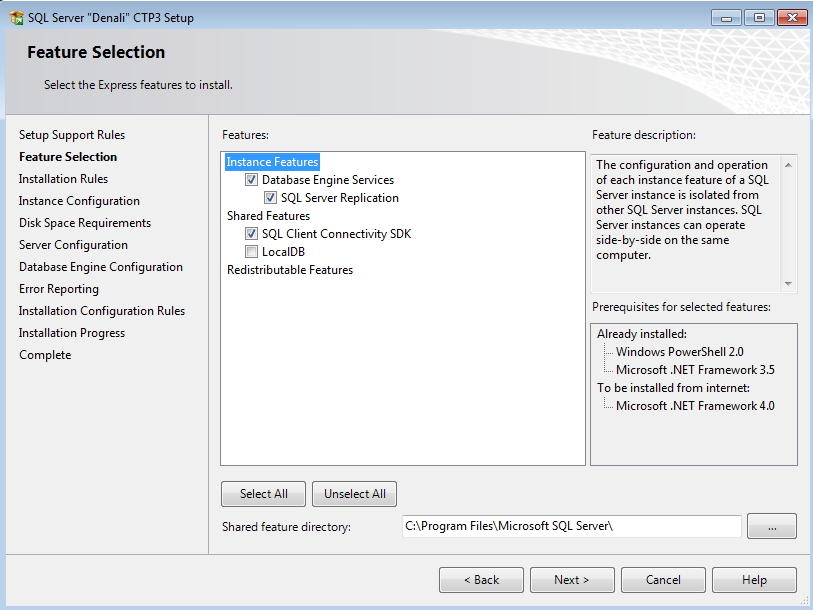

- #CAN MICROSOFT SQL EXPRESS 2012 PASSWORD#
- #CAN MICROSOFT SQL EXPRESS 2012 WINDOWS#
Default schema of dbo in the msdb system database.Additional rights are required if you want to see the replication status information and error messages in the Active Roles console. If the Administration Service’s database server holds the role of the Publisher in Active Roles replication, then the account the Administration Service uses to access the database must at a minimum be a member of the db_owner fixed database role and have the default schema of dbo in that database. The account that the standalone Administration Service uses to access the database must at a minimum be a member of the db_owner fixed database role and have the default schema of dbo in that database. This configuration is referred to as standalone Administration Service. When initially installed, the Administration Service’s database is configured not to participate in Active Roles replication. The required rights vary depending on the role of the Administration Service’s database server in the Active Roles replication environment. In either case, the account must have sufficient rights on SQL Server to retrieve data from, and make changes to, the database.
#CAN MICROSOFT SQL EXPRESS 2012 PASSWORD#
If the option to use SQL Server authentication is selected, then the Administration Service accesses the database with the SQL login and password supplied in the configuration wizard.
#CAN MICROSOFT SQL EXPRESS 2012 WINDOWS#
If the option to use Windows authentication is selected in the wizard for configuring the Administration Service, then the Administration Service uses its service account to access the database. The Administration Service accesses its database with the account specified during configuration: If you want the wizard to use an existing blank database for the Administration Service, then the account must be a member of the db_owner fixed database role and have the default schema of dbo in that database. If you want the wizard to configure the Administration Service to use an existing database of the current version, then the account must be a member of the db_owner fixed database role and have the default schema of dbo in that database. If you want the wizard to import data from the Active Roles database of an earlier version, then the account must be a member of the db_datareader fixed database role in the source database. If you want the wizard to create a new database for the Administration Service, then the account must be a member of the dbcreator fixed server role. The required rights of the account that is used to access SQL Server during configuration vary depending on your configuration scenario: If you select the option to use SQL Server authentication, then the wizard accesses SQL Server with the SQL login and password that you specify in the wizard. If you select the option to use Windows authentication, the wizard accesses SQL Server with the Windows user account under which the wizard is running. Which account is used to access SQL Server during configuration of the Administration Service depends upon the SQL Server connection option you select in the wizard for configuring the Administration Service. The account that you use when configuring the Administration Service must have sufficient rights on SQL Server to perform the configuration tasks. Run Active Roles replication (replication agent permissions). Configure replication in Active Roles (replication configuration permissions). Run the Active Roles Administration Service (operation permissions). 
Configure the Active Roles Administration Service (configuration permissions).This section discusses the SQL Server permissions required to: Safeguard for Privileged Sessions On Demandĭeploying the Administration Service > SQL Server permissions.Safeguard for Privileged Passwords On Demand.Safeguard Privilege Manager for Windows.One Identity Safeguard for Privileged Sessions (Balabit).One Identity Safeguard for Privileged Passwords.Active Directory Management and Security.






 0 kommentar(er)
0 kommentar(er)
